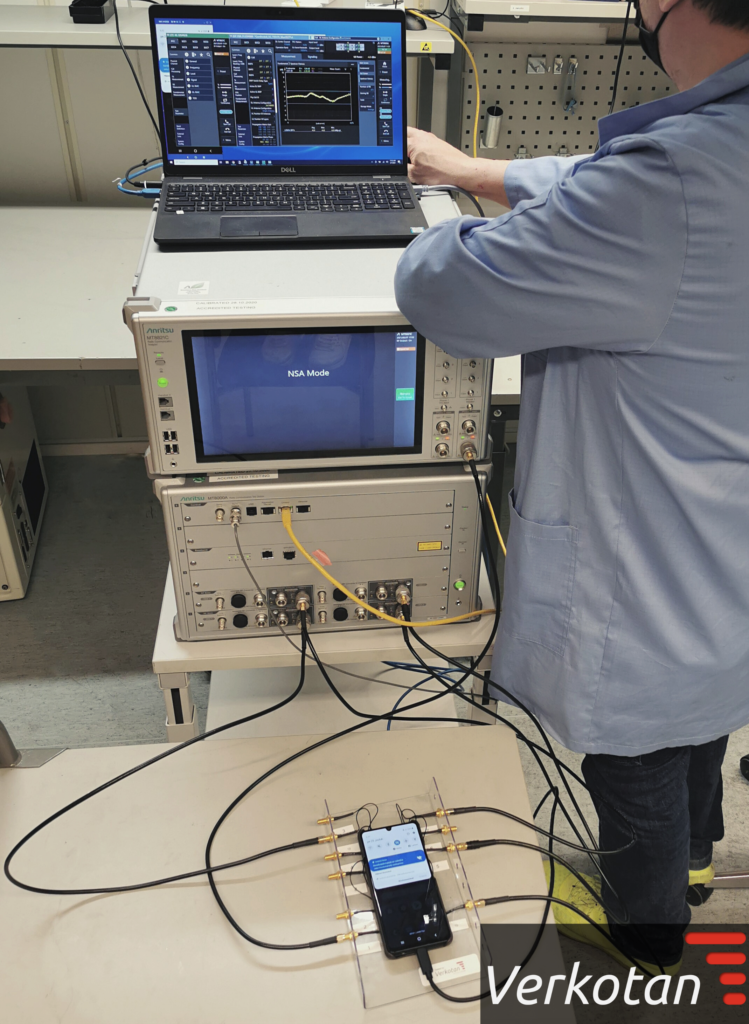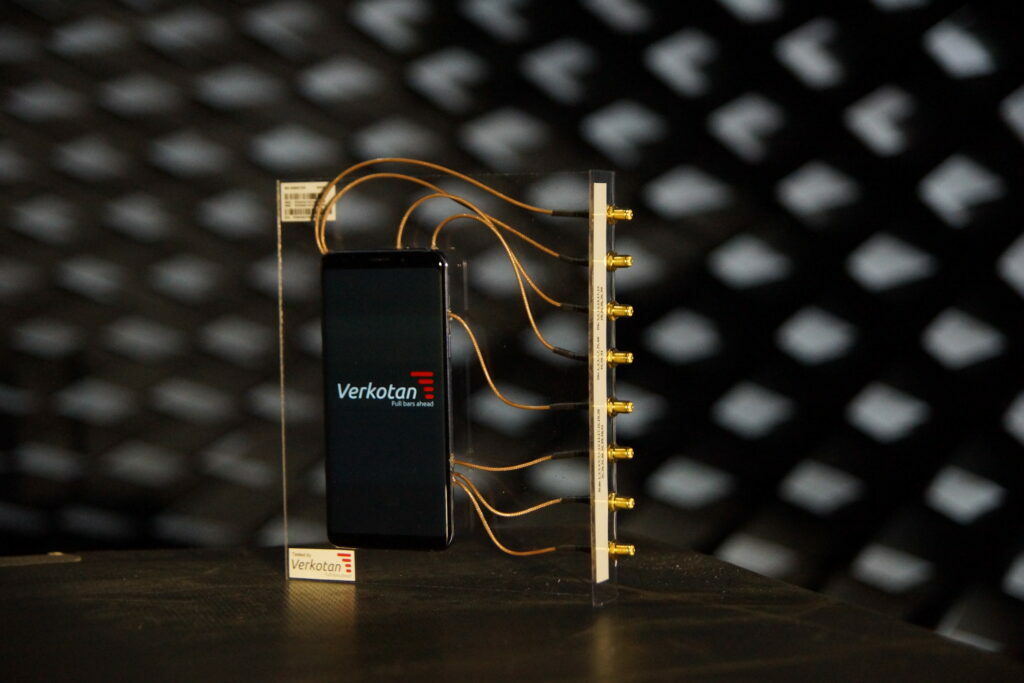Phone RF modification
Verkotan phone RF modification is typically done for RF performance testing, current consumption testing and other various conducted testing purposes. Phone modification is performed on devices whose performance is wanted to be examined without the effect of antennas. Verkotan can test 2G to 5G modems, for example, in phones, hot-spots and handsets. Verkotan phone modification means that the antennas of the device are bypassed by coaxial cables.
The process
At the beginning of the phone modification process, certain components of the phone must be removed to be able to solder the cables to the phone. The cables are soldered into specific places which the professional defines. It is difficult to find the right places to solder the cables. It requires a lot of experience, time and testing to be able to do that. Verkotan professionals have the experience and skills to perform the soldering in an efficient way.
Phone RF modification and verification
Conducted testing is possible to be performed after the phone has been modified. With conducted testing the transmission power and sensitivity of a device can be measured without the effect of antennas. To perform a conducted test, the phone is put in a case in which the cables are attached. After the attachment, the phone will be connected to the tester through the cables. The tester allows us to evaluate the modem performance without the impact of antennas.

At Verkotan laboratories, we do not only modify the phone, but we also verify the modification. This means that we also test and identify technologies and frequency bands that are functional via each cable. We ensure that cables work as they should. When the testing is done, we validate the test results and prepare a report of the results.
Challenges of the Phone RF Modification
Phone RF modification as such is complex to perform but there are couple of things that add even more challenge to it. Nowadays the components of the phones are extremely small, which makes the attachment of the cables almost impossible. The small size of components makes the soldering difficult. The cables must be attached well to ensure a good usability of the modified sample for the rest of its lifetime. The soldering is also challenging because it is important to take care that the other components do not suffer from the heat of the soldering.

Another challenge of phone RF modification is the all the time growing number of antennas. Typically, phones contain eight to twelve cellular antennas in addition to other antennas such as GPS and Bluetooth. When phones are developed further, the number of antennas is increasing. Every radio system needs their own antennas. This adds more challenge to work because a cable must be attached to every cellular antenna place.

Conducted testing vs. over-the-air testing
The transmission power and sensitivity of a device can be measured with both, OTA and Conducted testing. In some cases, conducted testing might be better option than OTA testing. It is easier to implement than OTA testing because the performance of the antennas does not need to be examined and it requires much less space.
The advantage of the conducted testing is that the air interface will not affect to the test result. Typically, in the OTA testing, the air interface causes at least 30 dB’s attenuation, but with conducted testing the attenuation can be reduced to 1-2dB. With conducted testing it is possible to examine the modem performance of the phone more in detail.
Nevertheless, conducted testing does not measure the whole wireless performance of the antennas. It does not either consider the problems that the antennas might have in the finished product, when it contains all its elements, such as batteries and other mechanics. Also, conducted testing does not take the user effect into account. Over-the-Air testing takes these issues into account.
Follow our social media channels to keep up with the latest news in the world of wireless technology.
